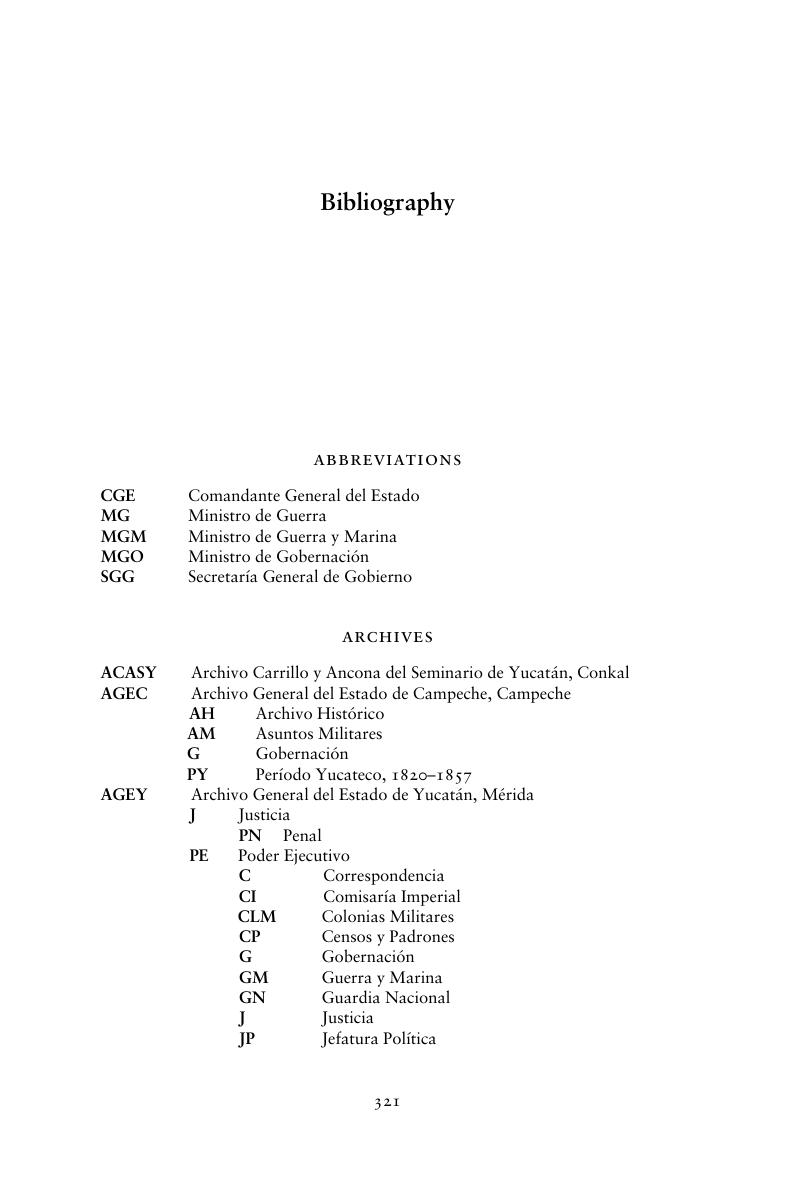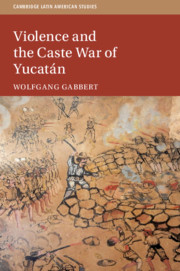Book contents
- Violence and the Caste War of Yucatán
- Cambridge Latin American Studies
- Violence and the Caste War of Yucatán
- Copyright page
- Dedication
- Contents
- Illustrations
- Acknowledgments
- Introduction: Caste War Violence – Prospect and State of the Art
- Part I Violence and War
- Part II Violence in Yucatán Before and Beyond the Caste War, 1821–1901
- Part III The Caste War and Violence: An Overview
- Part IV Violence and the Government Forces
- Part V Violence and the Kruso’b
- Part VI Intricacies of Caste War Violence
- Appendices
- Bibliography
- Index
- Other Books in the Series (continued from page ii)
- References
Bibliography
Published online by Cambridge University Press: 09 August 2019
- Violence and the Caste War of Yucatán
- Cambridge Latin American Studies
- Violence and the Caste War of Yucatán
- Copyright page
- Dedication
- Contents
- Illustrations
- Acknowledgments
- Introduction: Caste War Violence – Prospect and State of the Art
- Part I Violence and War
- Part II Violence in Yucatán Before and Beyond the Caste War, 1821–1901
- Part III The Caste War and Violence: An Overview
- Part IV Violence and the Government Forces
- Part V Violence and the Kruso’b
- Part VI Intricacies of Caste War Violence
- Appendices
- Bibliography
- Index
- Other Books in the Series (continued from page ii)
- References
Summary

- Type
- Chapter
- Information
- Violence and the Caste War of Yucatán , pp. 321 - 337Publisher: Cambridge University PressPrint publication year: 2019



